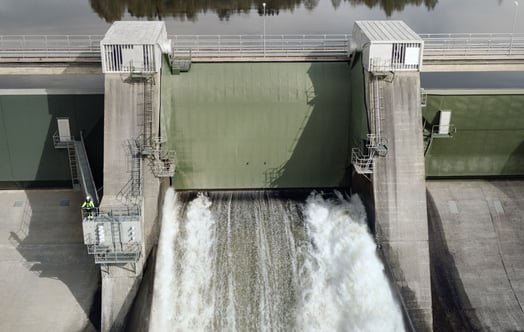HYBRIT: Hydrogen storage reduces costs by up to 40 per cent
HYBRIT's hydrogen storage has now been tested commercially on the electricity market. Its excellent results are important for the industry's transition. Fossil-free hydrogen is a prerequisite for producing fossil-free steel. By also adding storage, the variable cost of hydrogen production can be significantly reduced, by between 25 to 40 per cent. HYBRIT is a collaboration between SSAB, LKAB and Vattenfall that started in 2016.
The hydrogen storage facility was used specifically on the electricity market for about a month. The mission was to produce hydrogen using fossil-free electricity at a variable electricity price with the lowest possible cost, for example during certain parts of the day or for longer periods when weather-dependent electricity generation was in good supply. The hydrogen was delivered in a steady flow to SSAB.
“Despite the fact that Vattenfall optimised trading and operations against real electricity prices during a period with low price variations, the results were very good. The tests were conducted in a close collaboration between Hybrit Development and Vattenfall. By applying it in actual circumstances, we were able to follow in real time how much money was saved by using what was stored,” says Marie Anheden, senior project manager at HYBRIT.
All research done on the hydrogen storage, which is adjacent to HYBRIT's pilot plant for fossil-free iron in Luleå, has so far shown promising results. The design itself has proven to be well suited for rapid emptying and filling, interspersed by periods of less activity. The latest effort to lower the price of hydrogen production used a simulation tool, a new optimisation model and the 100 cubic meter pilot hydrogen storage in Luleå.
“These are exciting and important results because hydrogen from fossil-free electricity is one of the keys to transitioning the industry. Large-scale hydrogen storage makes it possible to adapt electricity consumption in a system of varying availability and prices and at the same time can supply the industry with hydrogen more stably and cost effectively. Used on a large scale, hydrogen storage can have a dampening effect on electricity price variations, which would favour investments in new electricity generation from all forms of fossil-free power,” says Mikael Nordlander, head of Industry Decarbonisation, Vattenfall.
“LKAB will change the entire production of iron ore products to fossil-free iron sponge produced with hydrogen gas, so these are very important results for us. We will need to produce over one million tonnes of hydrogen and consume over 70 TWh of fossil-free electricity per year when we have restructured the entire operation by 2050. Reducing costs is therefore absolutely necessary,” says Stefan Savonen, senior vice-president for energy and climate at LKAB.
“It is gratifying that the HYBRIT collaboration has had yet another positive result that we can present. The research gives us the security and confidence to continue developing a fossil-free value chain together with Vattenfall and LKAB. The hydrogen storage and fossil-free energy supply are of course important parts of the whole,” says Tomas Hirsch, Director and Head of Energy and ETS at SSAB.
Facts:
- The test: Vattenfall bid in the approx. 5 MW (max.) of hydrogen production on the electricity market daily and then sent the production plan to Hybrit.
- The hydrogen storage was first put into operation during the summer of 2022, with tests continuing until 2024.
- The hydrogen storage will be tested in the storage facility using the known LRC (Lined Rock Cavern) technology.
- In the HYBRIT pilot, the fossil-free (green) hydrogen is produced by water electrolysis using fossil-free electricity.
- The storage facility is a pilot plant measuring 100 cubic metres and contains hydrogen gas pressurised up to 250 bar. At full scale, potentially 100,000–120,000 m3 storing 100 GWh of electricity converted to hydrogen, it will be enough to power a full-size steel mill’s production for up to four days.
- The pilot storage, a steel-clad rock cavern, is located approximately 30 metres below ground level and approximately 100 metres in via a connecting tunnel.
- Vattenfall, SSAB and LKAB have invested SEK 200 million (divided equally between the ownership companies) and the Swedish Energy Agency, via Industriklivet, has injected just over SEK 52 million into the project.
For further details, please contact:
Magnus Kryssare, Press Secretary, tel. +46 (0)76 769 56 07, magnus.kryssare@vattenfall.com
Vattenfall Press Office +46 (0)8 739 50 10, press@vattenfall.com



